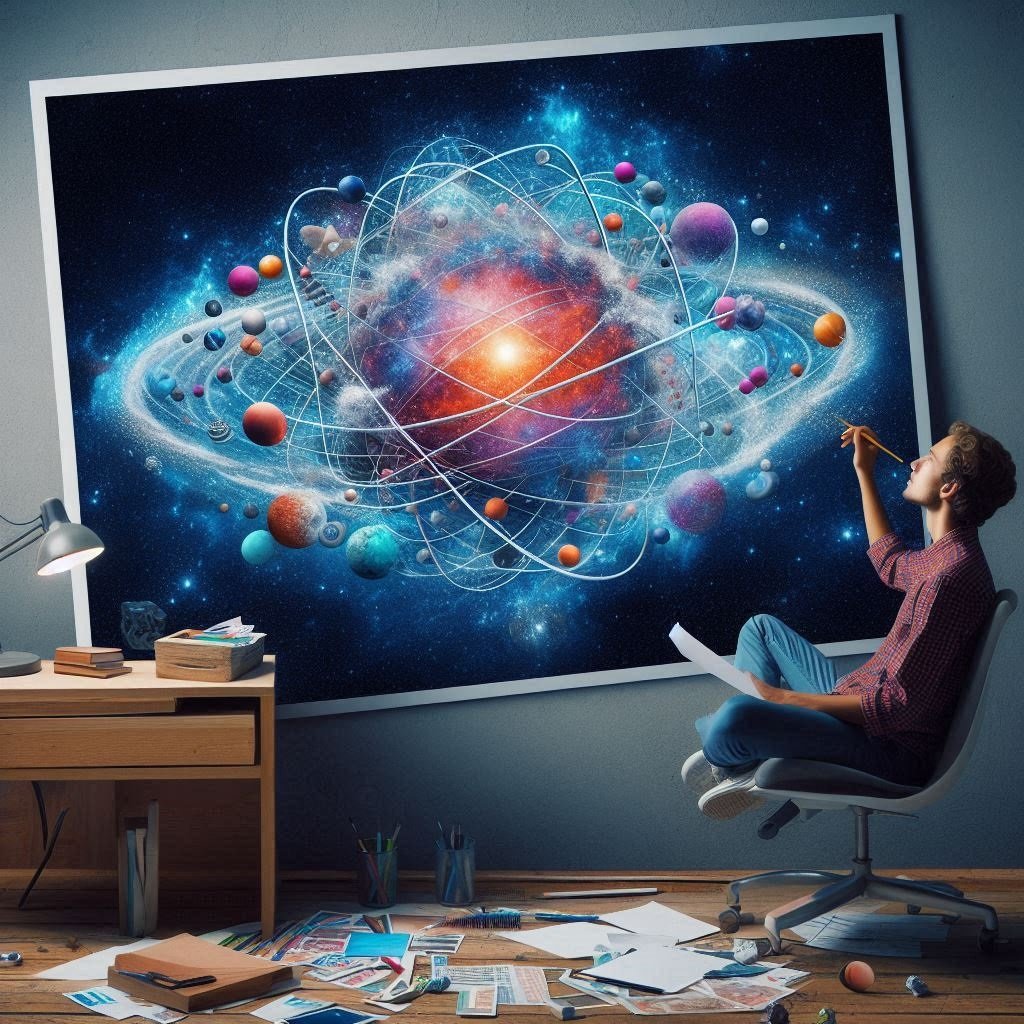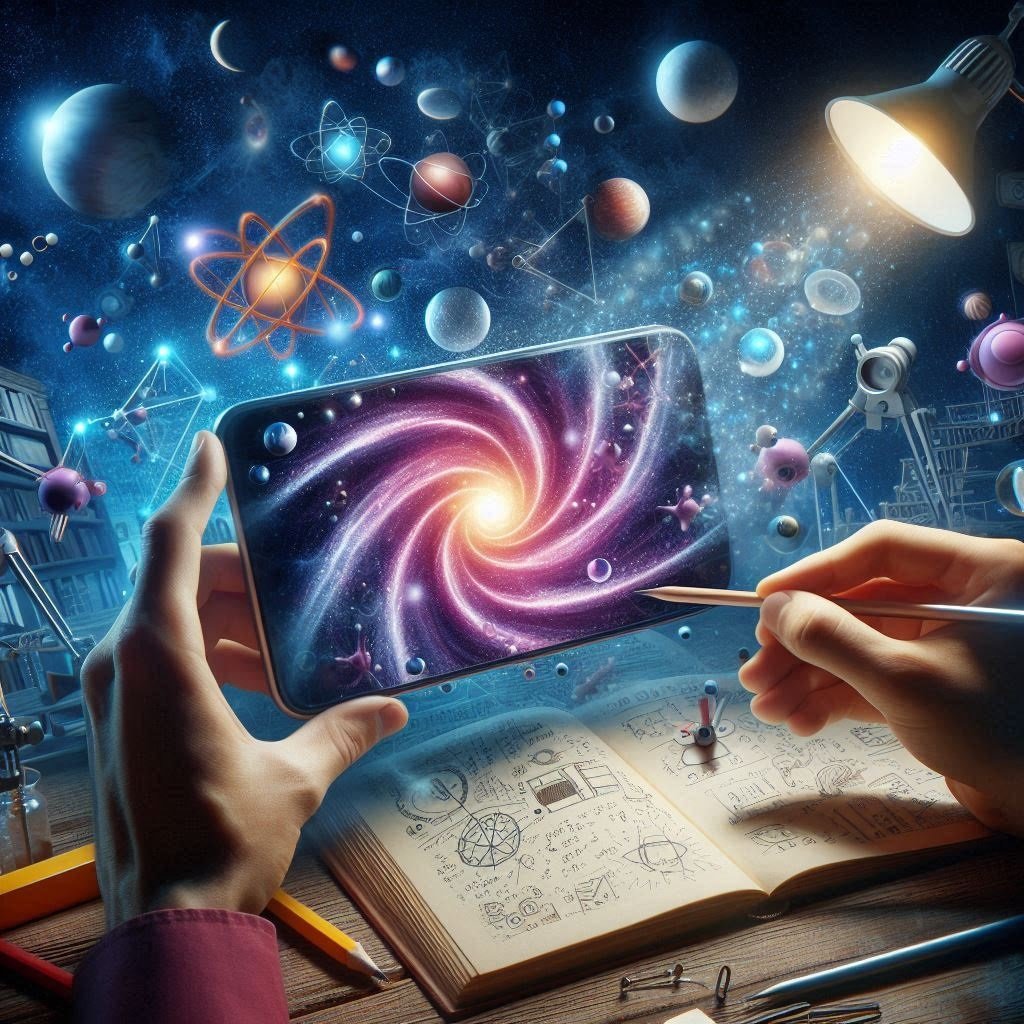Welcome to the strange and wonderful world of quantum physics! This field of science often feels like something straight out of science fiction. With particles that can be in two places at once, and cats that are both alive and dead, it’s no wonder many people feel overwhelmed. But fear not! We’re here to guide you through the basics of quantum physics in a way that’s fun, easy to understand, and incredibly fascinating.
What is Quantum Physics?
Quantum physics is the study of the smallest particles in the universe. It explores how these tiny particles behave, interact, and sometimes even break the rules of classical physics. While classical physics deals with the large-scale world we can see, touch, and experience every day, quantum physics dives into the subatomic realm. Here, particles like electrons, protons, and neutrons play by different rules.
The Birth of Quantum Physics
The journey of quantum physics began in the early 20th century. Classical physics, dominated by Newton’s laws, worked well for large objects. But when scientists began exploring the atomic and subatomic levels, they found these laws didn’t apply. This led to the birth of quantum physics, a new branch of science to explain these odd behaviors.
Max Planck and the Quantum Hypothesis
Max Planck, a German physicist, is often considered the father of quantum physics. In 1900, he introduced the idea that energy is quantized. This means energy is not continuous, but comes in small, discrete packets called “quanta.” This groundbreaking idea helped explain why certain phenomena, like blackbody radiation, didn’t fit into classical theories.
Albert Einstein and the Photoelectric Effect
Albert Einstein expanded on Planck’s work with his explanation of the photoelectric effect. He proposed that light itself is made up of particles called photons, each carrying a quantum of energy. This discovery earned Einstein the Nobel Prize in Physics in 1921 and confirmed that light has both wave-like and particle-like properties.

Wave-Particle Duality
One of the most mind-bending concepts in quantum physics is wave-particle duality. Simply put, particles like electrons and photons can behave both as particles and as waves. This dual nature is crucial to understanding the quantum world.
Double-Slit Experiment
A famous experiment that demonstrates wave-particle duality is the double-slit experiment. When light or electrons pass through two slits, they create an interference pattern on a screen, just like waves in water. But if you try to observe which slit the particles go through, they behave like particles, and the interference pattern disappears. This experiment shows that particles can exist in multiple states at once until observed.
Quantum Superposition
Quantum superposition is the idea that particles can exist in multiple states simultaneously. This concept is central to quantum physics and is illustrated by Schrödinger’s cat, a thought experiment proposed by physicist Erwin Schrödinger.
Schrödinger’s Cat
Imagine a cat in a sealed box with a radioactive atom, a Geiger counter, and a vial of poison. If the Geiger counter detects radiation, the poison is released, and the cat dies. If not, the cat lives. According to quantum mechanics, the atom is in a superposition of decayed and not decayed states, meaning the cat is both alive and dead until the box is opened and observed. This paradox highlights the strange nature of quantum superposition.
Quantum Entanglement
Another bizarre phenomenon in quantum physics is entanglement. When two particles become entangled, their states are linked, no matter how far apart they are. A change in one particle’s state will instantly affect the other, even if they’re light-years apart. This “spooky action at a distance,” as Einstein called it, challenges our understanding of space and time.
Real-World Applications of Entanglement
Quantum entanglement isn’t just a theoretical concept. It’s the basis for quantum computing and quantum cryptography. In quantum computing, entangled particles (qubits) can perform complex calculations much faster than classical computers. Cryptography of Quantum uses entanglement to create unbreakable encryption, ensuring secure communication.
Quantum Tunneling
Quantum tunneling is another fascinating aspect of quantum physics. It allows particles to pass through energy barriers that would be insurmountable in classical physics. This phenomenon is essential for many technologies, including semiconductors and tunnel diodes.
Quantum Tunneling in Action
In the sun, quantum tunneling allows protons to fuse and produce energy, fueling the star. Without tunneling, the temperatures required for fusion would be impossibly high. This process is also harnessed in nuclear fusion reactors, promising a future of clean energy.
Heisenberg’s Uncertainty Principle
Werner Heisenberg introduced the uncertainty principle, stating that you cannot simultaneously know a particle’s exact position and momentum. The more precisely you measure one, the less precisely you can measure the other. This principle underscores the inherent limitations of our ability to observe and measure the quantum world.
Impact on Measurement
The uncertainty principle has profound implications for science and technology. It means there are limits to what we can know about the universe at the quantum level. This principle is essential in fields like quantum cryptography, where it ensures that any attempt to eavesdrop on a quantum communication will disturb the system and be detected.
Quantum Physics in Technology
Quantum physics isn’t just theoretical; it has practical applications that impact our daily lives. From the development of transistors and lasers to the promise of quantum computers, the principles of quantum mechanics drive innovation and technology.
Transistors and Semiconductors
Transistors, the building blocks of modern electronics, rely on quantum mechanics. These tiny switches control the flow of electricity in devices like computers, smartphones, and more. The development of semiconductors, which make transistors possible, is rooted in our understanding of quantum physics.
Lasers
Lasers, another quantum-based technology, have countless applications. They are used in medicine for surgeries, in communications for transmitting data, in manufacturing for cutting and engraving, and even in everyday devices like barcode scanners and DVD players.
The Future of Quantum Technology
The future of quantum technology is incredibly exciting. Researchers are working on developing quantum computers, which promise to revolutionize computing by solving complex problems much faster than classical computers. Quantum communication could lead to entirely secure networks, and quantum sensors could dramatically improve the precision of measurements in various fields.

Quantum Computers
Computers of Quantum use qubits, which can exist in multiple states at once, thanks to superposition. This allows them to perform many calculations simultaneously, potentially solving problems that are currently impossible for classical computers. While still in the early stages, quantum computing holds promise for advancements in fields like cryptography, materials science, and artificial intelligence.
Quantum Communication
Communication leverages the principles of quantum mechanics to create secure communication channels. QKD (Quantum key distribution) uses entangled particles to generate encryption keys that are theoretically impossible to intercept without detection. This could revolutionize cybersecurity and protect sensitive data from cyber threats.
Overcoming the Challenges
Despite its potential, quantum technology faces significant challenges. Quantum systems are extremely sensitive to their environment, making them difficult to control and maintain. Researchers are working on developing error-correcting codes and more stable qubits to overcome these hurdles and unlock the full potential of quantum technology.
The Road Ahead
The journey of quantum technology is just beginning. As scientists and engineers continue to explore and develop these technologies, we can expect groundbreaking advancements that will reshape our world. From medicine to communication to computing, the possibilities are endless.
Quantum Physics and Philosophy
Quantum physics not only revolutionizes technology but also challenges our understanding of reality. The strange behaviors of particles at the quantum level have profound philosophical implications, questioning the nature of reality, observation, and existence.
The Many-Worlds Interpretation
One interpretation of quantum mechanics is the many-worlds theory, which suggests that every quantum event creates a new, branching universe. In this view, all possible outcomes of a quantum measurement exist in separate, parallel universes. This mind-bending idea challenges our perception of a singular reality and opens up a multiverse of possibilities.
The Role of the Observer
Quantum mechanics also raises questions about the role of the observer. The act of measurement seems to influence the state of quantum systems, leading to debates about the nature of consciousness and its interaction with the physical world. Some interpretations suggest that consciousness itself plays a crucial role in shaping reality.
Conclusion
Quantum physics is a fascinating and mind-bending field that continues to challenge our understanding of the universe. From wave-particle duality and quantum entanglement to the practical applications in technology and the philosophical questions it raises, quantum physics offers a glimpse into a world that is as strange as it is wonderful.
As we continue to explore the quantum realm, we can expect even more astonishing discoveries and innovations. Whether you’re a curious beginner or a seasoned scientist, the journey into quantum physics is sure to be an exciting adventure. So, dive in, embrace the weirdness, and uncover the secrets of the quantum world, one quantum leap at a time.
